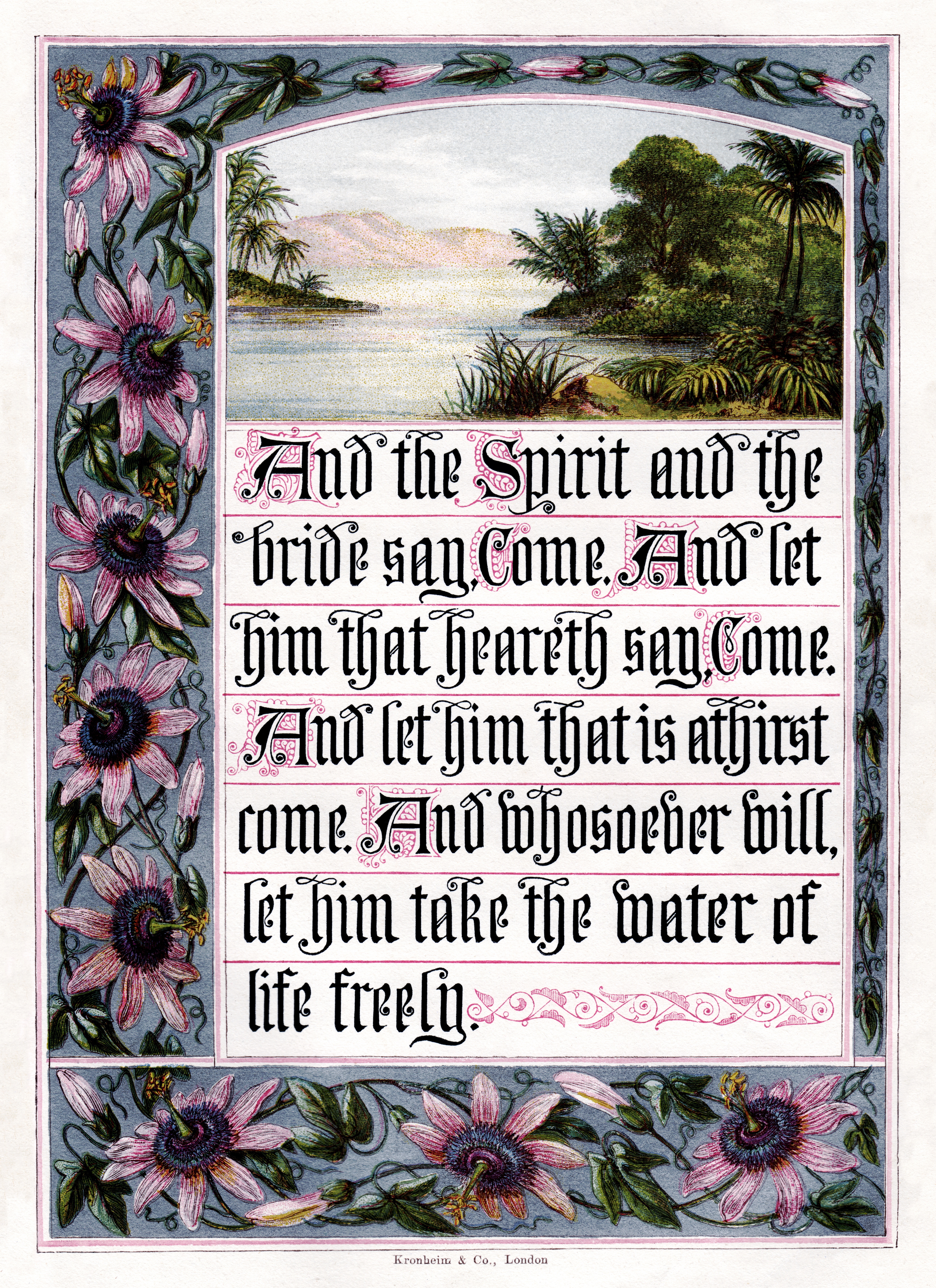Joseph Martin Kronheim on:
[Wikipedia]
[Google]
[Amazon]
Joseph Martin Kronheim (1810–1896) was a German-born 
Works by Joseph Martin Kronheim
at Digital Archive (
lithographer
Lithography () is a planographic method of printing originally based on the immiscibility of oil and water. The printing is from a stone (lithographic limestone) or a metal plate with a smooth surface. It was invented in 1796 by the German a ...
and wood engraver
Wood engraving is a printmaking technique, in which an artist works an image or ''matrix'' of images into a block of wood. Functionally a variety of woodcut, it uses relief printing, where the artist applies ink to the face of the block and pr ...
known for founding Kronheim & Co. and working with George Baxter.

Biography
Kronheim was born on October 26, 1810 inMagdeburg
Magdeburg (; nds, label=Low Saxon, Meideborg ) is the capital and second-largest city of the German state Saxony-Anhalt. The city is situated at the Elbe river.
Otto I, the first Holy Roman Emperor and founder of the Archdiocese of Magdebur ...
, Germany. By the age of 22 he resided in Edinburgh, and died at the age of 85 in 1896, in Berlin.
Kronheim & Co.
During the mid-1860s, Kronheim and Co. printed hundreds of biblical prints, adding to the firm's eventual total output of as many as 5000 different prints. Kronheim & Co. utilized the Baxter process to create prints. Kronheim's chief innovation in the field was the use ofzinc
Zinc is a chemical element with the symbol Zn and atomic number 30. Zinc is a slightly brittle metal at room temperature and has a shiny-greyish appearance when oxidation is removed. It is the first element in group 12 (IIB) of the periodi ...
instead of wood blocks, which reduced the amount of time needed to complete prints, but resulted in a less shiny finish.
By 1855, thanks in large part to the firm's use of zinc blocks, Kronheim & Co. had produced over 1000 different prints, including some for the 1855 Paris Exhibition
Paris () is the capital and most populous city of France, with an estimated population of 2,165,423 residents in 2019 in an area of more than 105 km² (41 sq mi), making it the 30th most densely populated city in the world in 2020. Si ...
. After the exhibition, Kronheim sold his share of the business to Oscar Frauenknecht.
Kronheim retired to Germany and attempted to set up other printing businesses, including an American one. However, these efforts failed, causing Kronheim to lose all of his investments. So, he rejoined Frauenknecht and his old firm, Kronheim & Co., but not as a partner. The firm expanded into Manchester and Glasgow.
In 1875, due to the rise of steam power and steam lithography machines, Kronheim & Co. ceased using the Baxter process.
Kronheim worked under Frauenknecht for Kronheim and Co. until 1887.
Legacy and Criticism
Kronheim and Co. produced at least 4000 and as may as 5000 different prints. This immense output has led some critics (such as Courtney Lewis) to assert that his firm was more concerned with quantity than quality. Others, such as author Mike Martin, argue that Kronheim simply preferred a larger subject variety. Martin argues that Kronheim was an important book illustrator, of children's books in particular, and that much of his work was of high quality. Kronheim is best known for his set of four large coaching scene prints, entitled ''Spring'', ''Summer'', ''Autumn'' and ''Winter''. In July 2000, the New Baxter Society held an exhibition sampling Kronheim's work atSt. Albans
St Albans () is a cathedral city in Hertfordshire, England, east of Hemel Hempstead and west of Hatfield, north-west of London, south-west of Welwyn Garden City and south-east of Luton. St Albans was the first major town on the old Roman r ...
.
References
External links
* *Works by Joseph Martin Kronheim
at Digital Archive (
Toronto Public Library
Toronto Public Library (TPL) (french: Bibliothèque publique de Toronto) is a public library system in Toronto, Ontario. It is the largest public library system in Canada, and in 2008 had averaged a higher circulation per capita than any other pu ...
)
*
{{DEFAULTSORT:Kronheim
1810 births
1896 deaths
German lithographers
German wood engravers